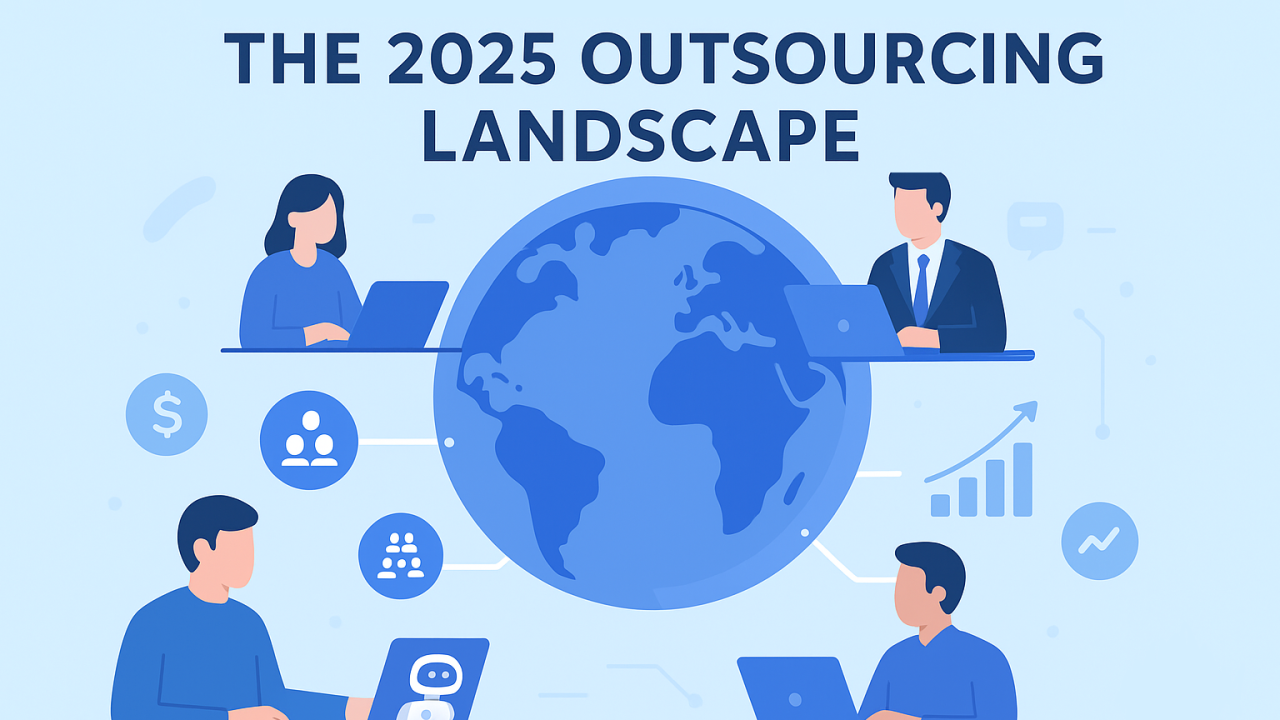The outsourcing market has reached $410-450 billion in 2025, driven by talent shortages, AI integration, and remote work normalization. Discover the data-driven insights shaping how companies approach outsourcing partnerships today.
The software outsourcing landscape in 2025 is defined by practical business decisions rather than abstract trends. With the market reaching $410-450 billion and growing at approximately 5% annually since 2020, outsourcing has become a fundamental component of how companies access talent and execute projects.
Talent Shortage Driving Strategic Decisions
The numbers tell a clear story: 74% of employers cannot find the talent they need locally. This isn't about cost savings anymore—it's about getting work done. Local hiring has become slow and expensive, forcing executives to make pragmatic decisions about resource allocation.
In response, 80% of executives plan to maintain or increase their outsourcing investments. These aren't experimental budgets; they represent core operational decisions. Companies have increased outsourcing spending from 5.6% to 8.1% of IT budgets, a 45% jump that reflects the strategic importance of external partnerships.
AI Integration as Table Stakes
87% of outsourcing companies want AI integration from their partners. This expectation isn't driven by hype—it's driven by financial sense. Companies expect their outsourcing partners to use AI tools for efficiency, faster delivery, and better outcomes.
The integration of AI into outsourcing relationships represents a maturation of the market. Partners are evaluated not just on their ability to execute tasks, but on their capacity to leverage modern tools that improve speed and quality. AI adoption in outsourcing is about delivering measurable business value, not chasing technological trends.
Remote Work Eliminates Traditional Barriers
Need Expert Help with Your Project?
Our team of specialists can help you implement these strategies effectively.
With 35% of workers now remote, the traditional arguments against outsourcing have weakened considerably. When internal teams work via Slack, Zoom, and project management platforms, geographic location becomes less relevant to collaboration effectiveness.
Remote work normalization has fundamentally changed how companies evaluate outsourcing partnerships. Communication happens via digital platforms regardless of whether team members are in the same building or different continents. This shift has made outsourcing a more natural extension of existing workflows rather than a fundamentally different operating model.
Financial Perspective Beyond Cost Savings
While cost considerations remain relevant, the primary driver of outsourcing in 2025 is access to specialized skills and faster project completion. Companies are willing to pay for expertise that would take months or years to develop internally, particularly when market conditions demand rapid execution.
The financial case for outsourcing now centers on opportunity cost: what revenue or competitive advantage is lost by delaying projects while searching for local talent? In many cases, the cost of waiting exceeds the cost of engaging experienced external teams.
Realistic Expectations for Success
Outsourcing is a business tool, not a magic solution. Success requires proper implementation, clear communication, and treating external teams like actual team members. Companies that approach outsourcing with realistic expectations and invest in partnership quality see substantially better outcomes than those treating it as a purely transactional relationship.
The most successful outsourcing relationships in 2025 are characterized by transparency, aligned incentives, and mutual investment in long-term success. These partnerships deliver not just completed projects, but sustained competitive advantage through access to specialized expertise and accelerated execution capability.
The 2025 outsourcing landscape is defined by pragmatic problem-solving in a tight labor market. Companies are prioritizing efficiency, specialized skills, and speed of execution. The organizations that thrive will be those that build genuine partnerships with external teams, leveraging modern tools and communication practices to deliver business outcomes that matter.
Key Takeaways
- The software outsourcing landscape in 2025 is defined by practical business decisions rather than ab...
- **Talent Shortage Driving Strategic Decisions**.
- The numbers tell a clear story: 74% of employers cannot find the talent they need locally.
- In response, 80% of executives plan to maintain or increase their outsourcing investments.

